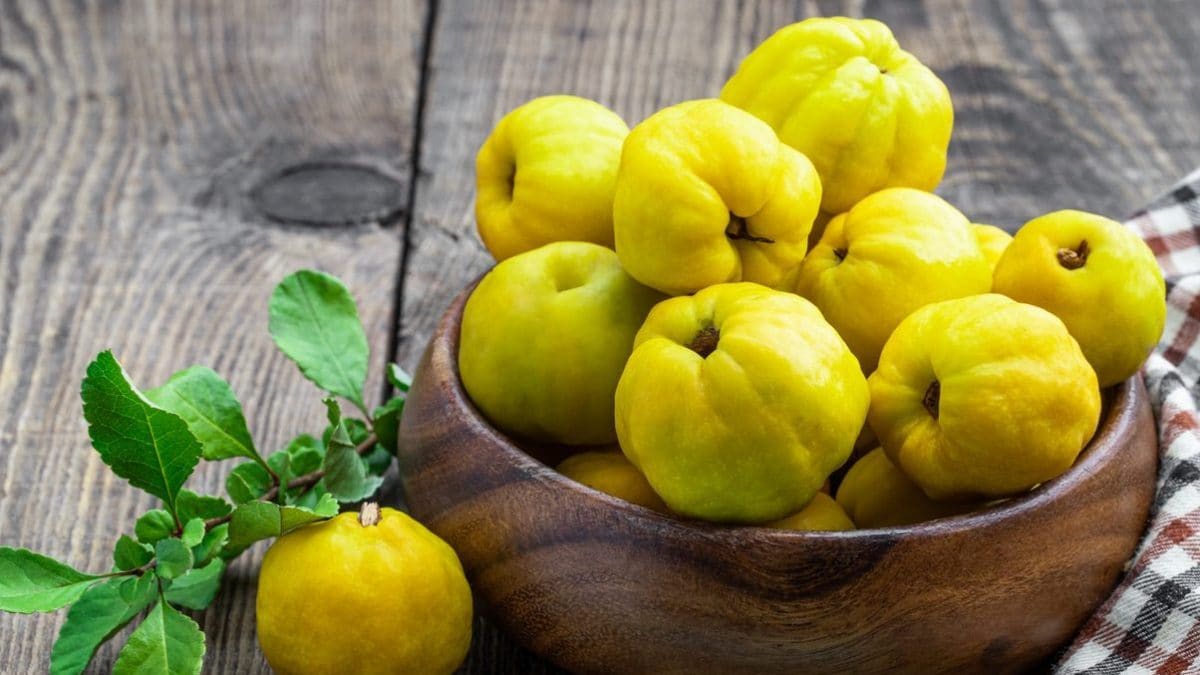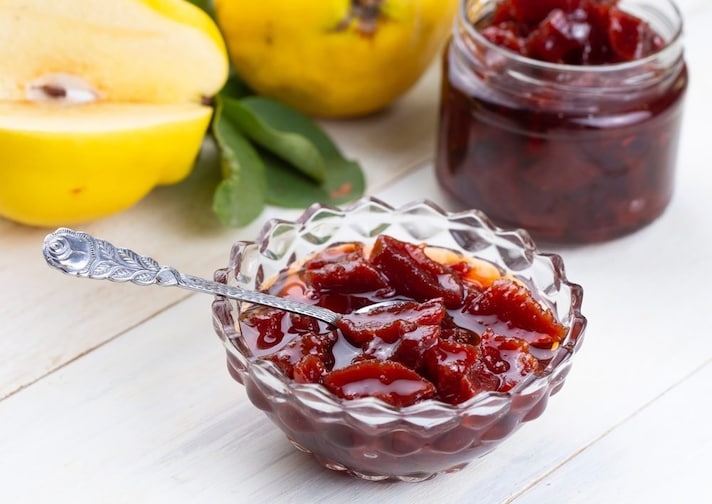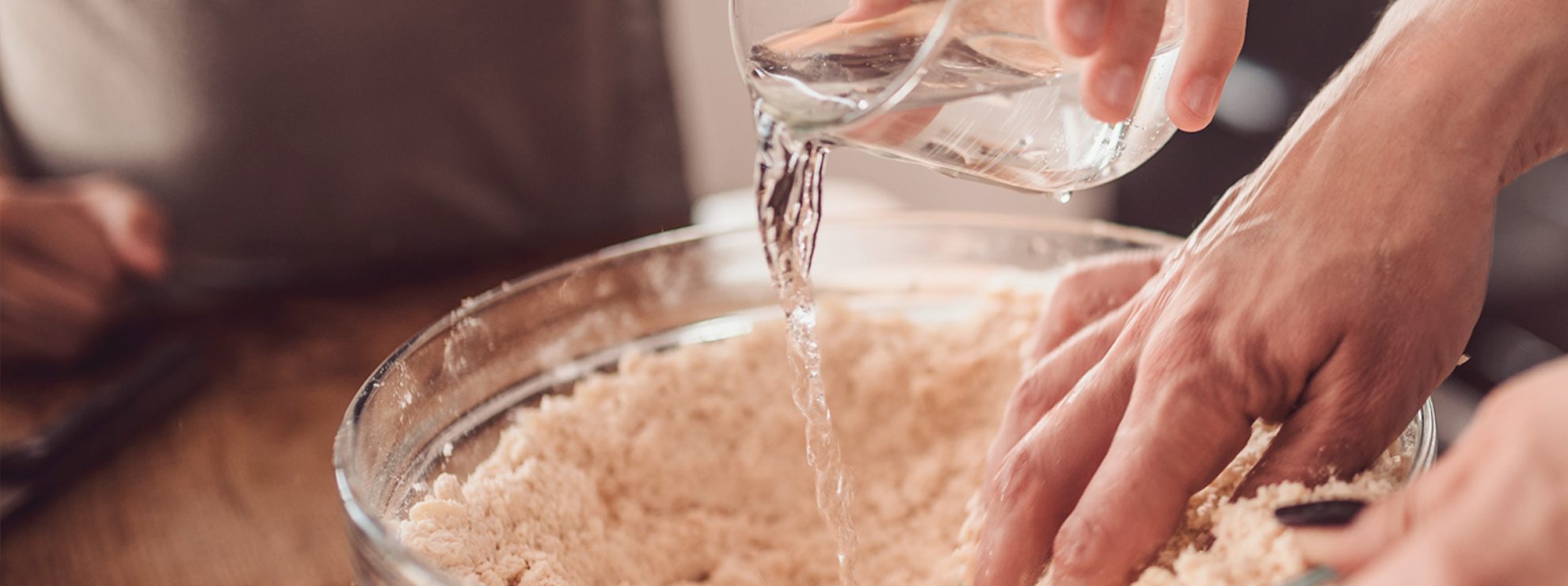
This is one of those fruits that is often overlooked or forgotten, but which actually hides surprises both nutritionally and gastronomically. Let's look at what they are, how and where they are produced, their distinctive characteristics, and above all, how to use quinces in the kitchen.
Where Do Quinces Come From?
The scientific name of the quince is Cydonia oblonga, which derives from Cydonia, the ancient city on the island of Crete, meaning "City of Apples," where the finest quinces were apparently grown. Although native to Asia Minor and the Caucasus, the quince spread throughout the Mediterranean thanks to the Greeks and Romans, and was considered a fruit sacred to Aphrodite. Furthermore, in Roman times, it was well known, cited by Cato, Pliny, and Virgil.
How Quinces Are Made: Flavor and Benefits
Quinces belong to the Rosaceae family and have an irregular shape, which can be more or less rounded or elongated depending on the variety. In the first case, they resemble apples, while other fruits have a more oblong shape reminiscent of the more well-known pears, although they are in fact neither one nor the other.
They have a rough skin, a deep yellow color when ripe. The flesh is firm and compact, white or pinkish, with an intense and pleasant aroma. The flavor is sour and bitter, which is why quinces are not usually eaten raw, but are cooked or preserved, as we will see later.

Among the many features we can mention that they are:
- Rich in water and fiber, including pectin, a soluble fiber with gelling, stabilizing, and thickening properties. Pectin helps regulate blood sugar and cholesterol levels, as well as aiding digestion and intestinal transit.
- Low in calories and fat, as well as containing some minerals such as potassium and phosphorus, useful for muscle and nervous well-being.
- Rich in vitamin C and B vitamins, they have antioxidant, anti-inflammatory, and cell-protective properties.
- They have a low glycemic index, so they do not cause blood sugar spikes.
- Their aroma is intense and pleasant, while their flavor is sour and bitter, due to the presence of organic acids such as malic, citric, and shikimic, and tannins, which also give them a certain astringency.
How to Grow and Harvest Quinces
Growing quinces requires a sunny location with fertile, moist, and slightly acidic soil—characteristics abundant in the Mediterranean region. Harvest takes place between September and October. To prune them, remove any winter or spring leaves that are too long or heavy. Once harvested, they should be stored at room temperature until ripe. To extend their shelf life, they can be refrigerated in a suitable bag.

Quince Varieties
There are several varieties of quince, which differ in shape, color, aroma, and flavor. Among the most well-known and widespread are:
- The Angers quince produces large, elongated, pale yellow fruits with fragrant white flesh. It is a very hardy and productive variety, often used as a rootstock for pear and apple trees.
- Portugal, which produces small, ribbed fruits, intense yellow in color, with pink, aromatic flesh. It is an early and delicate variety, prized for its gastronomic qualities.
- Champion has small, rounded fruits, greenish-yellow in color, with white, tart flesh. It is a late-ripening, hardy apple, suitable for growing in cold climates.
- Smyrna is an ancient and prized variety, originally from Turkey, used to make the famous quince jelly. Its fruits are large, irregular, golden yellow, with white, tart flesh.
How to Use Quinces When Cooking
The tart flavor of quinces makes them suitable only for cooking, which is probably why they are less commonly cultivated than apples and pears. However, they lend themselves to a variety of culinary preparations. Some examples are:
- Membrillo, the most classic of quince-based preserves, consists of a compact, sweet paste, cut into cubes or slices, to be consumed as a dessert or as an accompaniment to mature cheeses.
- Quince mustard, a sweet and sour sauce made by cooking quinces with sugar, vinegar, and mustard. It's used to season boiled or roasted meats, but also as a filling for savory pies and tarts.
- Quince jam or preserves are perfect for accompanying rusks, filling cakes, and also serving with aged cheeses, fatty meats, poultry, and game.
- Quince liqueur is a sparkling alcoholic beverage, similar to cider, made by fermenting quince juice with selected yeasts. It has a tart, aromatic flavor, ideal for accompanying savory or sweet dishes.
- Quince pie, a variation on the classic apple pie, is made by adding slices of cooked and caramelized quince to shortcrust pastry or sponge cake. It can be enriched with walnuts, pine nuts, or almonds.
;Resize,width=767;)
